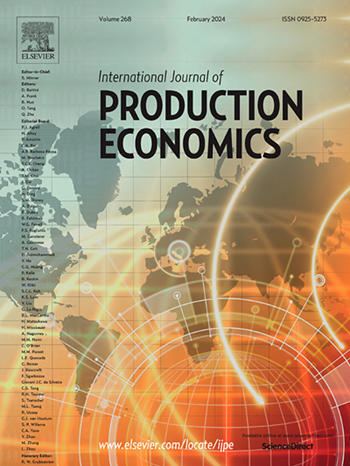Composite contract design for enhancing emergency reserves
IF 9.8
1区 工程技术
Q1 ENGINEERING, INDUSTRIAL
引用次数: 0
Abstract
To mitigate the impact of material shortages caused by emergencies, the government typically adopts an option contract to entrust enterprises with reserving materials in advance. During an emergency, the government purchases the materials wholesale and sells them to consumers. We integrate revenue-sharing and price-discount mechanisms into the option contract to explore effective ways to increase reserve quantity. We study three contracts: The option (OP) contract, a combination of the traditional option contract and a reward/punishment mechanism; the option and revenue-sharing (RS) contract, which allows the government to share part of the sales revenue with the enterprise based on the OP contract; and the option and price-discount (PD) contract, which involves the government selling materials at a discounted price based on the OP contract. First, we find that only when the government-required reserve quantity is relatively large can the government encourage an enterprise to reserve materials in advance through the OP, RS, and PD contracts. Moreover, only when the government-required reserve quantity is significantly larger dose the optimal reserve quantity under the RS or PD contracts exceed that under the OP contract. Second, compared to the OP contract, the government’s utility always decreases under the RS contract, while it can either increase or decrease under the PD contract. Both the RS and PD contracts have the potential to increase the enterprise’s utility, which depends on the government’s revenue-sharing and price-discount rates. Finally, we also consider other reserve modes: The government-enterprise joint reserve (GER) mode, which involves both the government and the enterprise reserving materials in advance; and the physical and production capacity reserve (PCR) mode, which combines the enterprise’s advance reservation with its immediate production after an emergency. We study the impact of the OP, RS, and PD contracts on the total reserve quantity in the GER and PCR modes and compare them with the base model, which only has enterprise reserves. The RS contract has the broadest applicability, followed by the OP and PD contracts.
增强应急储备的复合合同设计
为了减轻突发事件造成的物资短缺的影响,政府通常采用期权合同的方式委托企业提前储备物资。在紧急情况下,政府批量购买这些材料并将其出售给消费者。我们将收益分享和价格折扣机制引入期权契约,探索增加储备数量的有效途径。本文研究了三种契约:期权(OP)契约,一种传统期权契约与奖惩机制的结合;期权和收益分享(RS)合同,允许政府在OP合同的基础上与企业分享部分销售收入;期权和价格折扣(PD)合同,即政府在OP合同的基础上以折扣价出售材料。首先,我们发现只有当政府要求的备用量较大时,政府才能通过OP、RS和PD合同鼓励企业提前备用量。而且,只有当政府要求的储备数量显著增大时,RS或PD合同下的最优储备数量才会超过OP合同下的最优储备数量。第二,与OP合同相比,RS合同下的政府效用总是减少的,而PD合同下的政府效用可以增加也可以减少。RS和PD合同都有可能增加企业的效用,这取决于政府的收入分成和价格折扣率。最后,我们还考虑了其他储备模式:政府和企业共同储备(GER)模式,即政府和企业都提前储备物资;实物和生产能力储备(PCR)模式,将企业的提前储备与紧急情况下的即时生产相结合。我们研究了GER和PCR模式下OP、RS和PD合同对总储备数量的影响,并与仅包含企业储备的基本模型进行了比较。RS合同具有最广泛的适用性,其次是OP和PD合同。
本文章由计算机程序翻译,如有差异,请以英文原文为准。
求助全文
约1分钟内获得全文
求助全文
来源期刊
CiteScore
21.40
自引率
7.50%
发文量
266
审稿时长
52 days
期刊介绍:
The International Journal of Production Economics focuses on the interface between engineering and management. It covers all aspects of manufacturing and process industries, as well as production in general. The journal is interdisciplinary, considering activities throughout the product life cycle and material flow cycle. It aims to disseminate knowledge for improving industrial practice and strengthening the theoretical base for decision making. The journal serves as a forum for exchanging ideas and presenting new developments in theory and application, combining academic standards with practical value for industrial applications.

 求助内容:
求助内容: 应助结果提醒方式:
应助结果提醒方式:


